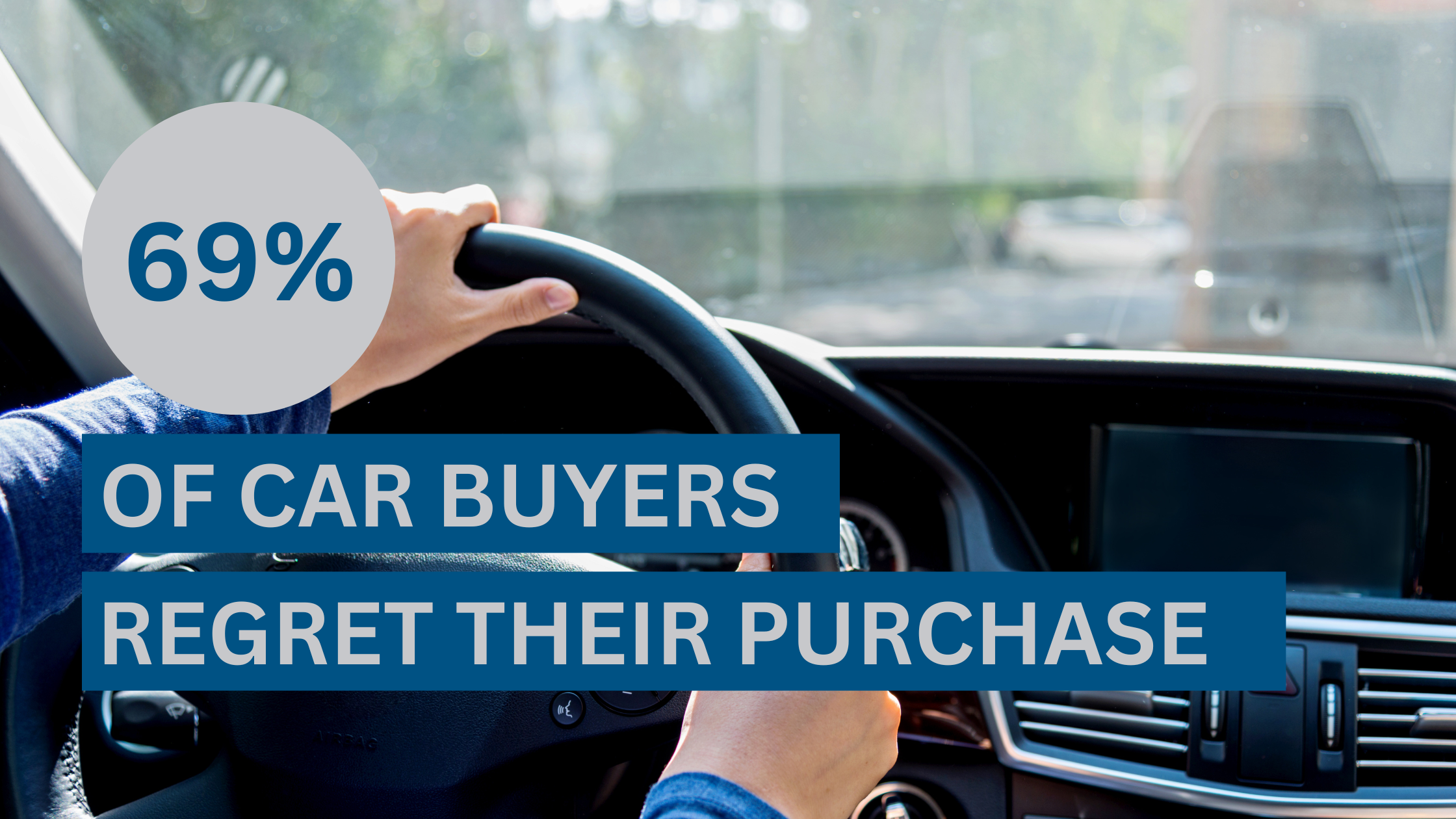
In this blog, we’ll address not only how to buy a car, but how NOT to buy a car.
Autotrader published an article based on a series of surveys that reported a shocking statistic; 69% of people who buy a car have buyer’s remorse.
The article gives two reasons for the post-purchase pit in the stomachs of consumers.
1. They felt like they overpaid
2. They ran into mechanical problems shortly after the purchase.
Many consumers believe they know how to buy a car, but this statistic reveals a flaw in the process. Cars often disappoint because either the price isn’t right or the quality doesn’t live up to what was paid. To ensure you’re getting the best value for your money, there are key factors to consider. Read on for tips about what to look for, common oversights, and why 69% of buyers wish they could do it all over again.
Are you on the path to join the 69%?
Here’s the short answer. Consumers are far too confident they’re getting their money’s worth when they buy. They end up overpaying for cars in below-average condition because they trusted bad information. Then, that misinformation is used as fact to decide what’s a good deal and what’s not.
The problem starts with the approach. A buyer’s first misstep is thinking they can make a cost-to-quality comparison on multiple vehicles using automotive comparison tools designed for consumers. These tools include third-party sites, price guides, dealer listings, and history reports. While they can be helpful in the hands of an expert, these tools don’t paint the full picture!
The problem deepens as research continues. Buyers often rely on automotive comparison tools, believing they’re the best source for information. While not inherently bad, these tools should only be a small part of the picture. Dealers use them too, highlighting positives and hiding negatives, which creates confusion around price and quality. As a result, it’s difficult for consumers to accurately assess a car’s true price or condition online, making it nearly impossible to compare. This isn’t about effort or intelligence—it’s about a system that makes it hard to spot a car in good condition for a fair price.
So what’s the deal?
Amongst all the research, car buyers get lost in finding “a good deal.” Without knowing it, the tunnel vision toward finding “a good deal” vs. “a fair deal” distracts buyers from reality. It isn’t simply the lowest price. The reality is, a fair deal happens when the price matches the true quality of the car. To find it, there are two things to consider.
1. THE ACTUAL CONDITION– When considering the actual condition of the cars you want to compare, remember not all similar cars are in the same condition. Many buyers believe that a vehicle’s condition will be equal across all cars with the same year, make, and model. It’s remarkable how often we see similar vehicles that have a significant difference in quality due to how they were treated and where they were driven.
2. THE OUT-THE-DOOR-COST– The out-the-door cost of the cars you compare is what you need to focus on, not just the sticker price from the listing. Things like hidden fees, trade value, financing games, and listed price factor into the actual price. Oftentimes the online listed price is completely different than the out-the-door cost.
When comparing cars, think of it like booking a hotel room online. When most people hotel shop, they use the star rating to sort by quality. The hotel industry utilizes the star system to create consistency among hotels by having regular independent evaluations of overall quality. With cars, there is no such rating system. If you can’t see the quality rating, you can not make a helpful comparison.
Why can’t you do this with cars?
Even if you learn how to negotiate, the sticker price you use to make your initial analysis is a moving target. Deceptive dealer pricing tactics are used to show a price that gets you excited, but in the end, it’s not the price you pay.
Regarding the actual condition, the real question is, “Do you have, in hand, a report from a recent independent mechanical inspection on all the cars you are considering?” The answer is likely no, making the comparison unhelpful at best, and misleading at worst.
Without a system to independently rank quality, the real price, and without deep industry knowledge… you can’t make a helpful comparison. This inherently will put you on the path to be a part of the 69%.
The rise of consultative car buying is a direct response to the frustrations of consumers navigating a system stacked against them. Despite all the comparison tools, dealers still have the advantage, much like a casino where the house always wins. While buyers can get a fair deal, it’s a gamble, as 69% of people wish they could do it over.
The solution? Work with an expert—not a dealer. Dealers excel at closing deals; experts help you make the right choice based on your needs. For 40 years, we’ve been guiding people through the car-buying process, long before it became a trend. Learn why consultative car buying is on the rise and how our experience sets us apart!
